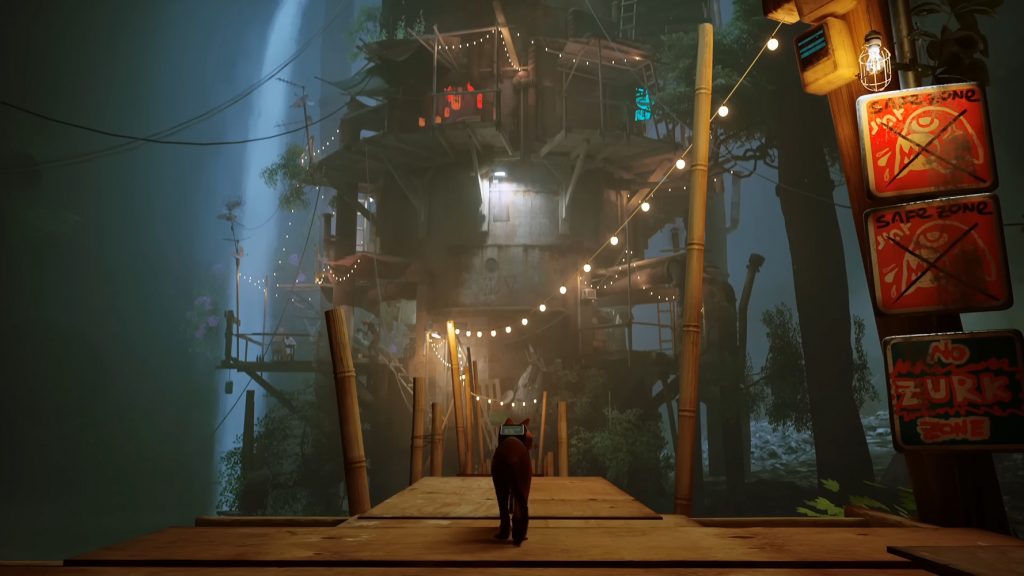We are not always directly interested in technological trends until we witness them directly. That being said, this incarnation is most obvious in the global video game industry with a turnover of more than $200 billion. Playing a new VR game or hanging out in an addictive metaverse, you gradually realize that you have already joined the trends. Or is this realization yet to come?
Video games have come a long way from toxic-bright pixelated platformers to ultra-realistic open worlds with thousands of real-time players. The development of visuals and interactivity is inextricably linked with the development of technology, which gives a technical opportunity to deploy resource-intensive processes.
And if you’re interested in learning more about what new gaming technologies are shaping the modern world, join our short but fact-rich tour. Or skip to that very bonus trend. We wonder if you have any idea about it.
Milestones in the Evolution of Games Technology
The evolution of game technology spans thousands of years, marked by significant milestones that have shaped how we play and interact with games. Each milestone represents a crucial advancement in gaming technology, from ancient board games to modern virtual reality experiences. Let’s explore some of the key milestones in chronological order:
3500 BC: Popularity of Board Games
Зущзду have enjoyed board games for thousands of years, with evidence of their existence dating back to ancient times. Games like Senet in Ancient Egypt and Go in Ancient China provided entertainment and challenged players’ strategic thinking, laying the foundation for future gaming innovations.
19th Century: Commercial Production of Board Games
The 19th century saw the commercial production and widespread distribution of board games, thanks to printing and manufacturing technology advancements. Games like Chess, Checkers, and Monopoly gained popularity among households, becoming staples of family entertainment and social interaction.
1902: Monopoly
Monopoly, originally known as “The Landlord’s Game,” was patented by Elizabeth Magie in 1904. Charles Darrow established its current form in 1935. This iconic board game has become one of the best-selling games of all time, captivating players with its economic gameplay and competitive mechanics.
1970: The First Video Game
The 1970s marked the dawn of the video game era, with the release of games like “Pong” by Atari. Developed by Nolan Bushnell and Ted Dabney, Pong introduced the concept of electronic gaming to the masses, laying the groundwork for the video game industry’s exponential growth in the decades to come.
1990s: Solitaire on Windows 3.0
The inclusion of Solitaire in Microsoft Windows 3.0 in 1990 introduced millions of users to computer-based gaming. Solitaire, along with other pre-installed games like Minesweeper and Hearts, helped popularize gaming on personal computers and contributed to the mainstream acceptance of computer gaming as a leisure activity.
2000: Popularity of Mobile Games
The rise of smartphones in the early 21st century revolutionized the gaming industry, enabling players to enjoy games on the go. Mobile games like “Snake” on Nokia phones and later, “Angry Birds” and “Candy Crush Saga,” captured the attention of audiences worldwide, driving the exponential growth of the mobile gaming market.
2012-2016: VR Becomes a Popular Topic
The emergence of Virtual Reality (VR) technology in the early 2010s sparked widespread interest and excitement among gamers and technologists alike. Platforms like Oculus Rift, HTC Vive, and PlayStation VR brought immersive gaming experiences to consumers, pushing the boundaries of what was possible in gaming technology.
Importance of Staying Updated on the Latest Gaming Trends
Staying updated on the latest gaming trends is crucial for individuals and companies involved in the gaming industry. These trends encompass various aspects of gaming, including technology advancements, player preferences, market dynamics, and industry innovations. Understanding and adapting to these trends offer several significant benefits:
- Staying Relevant: The gaming landscape evolves rapidly, with new technologies, platforms, and gameplay mechanics emerging regularly. By staying updated on the latest trends, game developers, publishers, and content creators can ensure that their offerings remain relevant and appealing to players.
- Meeting Player Expectations: Players’ preferences and expectations change over time and are influenced by cultural shifts, technological advancements, and evolving gaming experiences. By keeping abreast of gaming trends, developers can anticipate and meet player expectations, delivering experiences that resonate with their target audience.
- Identifying Opportunities: Emerging gaming trends often present new opportunities for innovation, creativity, and growth. Whether exploring new genres, experimenting with innovative gameplay mechanics, or leveraging emerging technologies like virtual reality (VR) and augmented reality (AR), staying updated enables developers to identify and capitalize on these opportunities.
- Competitive Advantage: In a competitive industry like gaming, staying ahead of the curve can provide a significant competitive advantage. By incorporating the latest trends into their products and strategies, companies can differentiate themselves from competitors, attract more players, and maintain a strong market position.
- Driving Business Success: Keeping pace with gaming trends can contribute to business success by maximizing revenue opportunities, expanding market reach, and fostering player engagement and loyalty. Whether it’s through strategic partnerships, targeted marketing campaigns, or innovative game development, staying updated can drive positive business outcomes.
- Fostering Innovation: Gaming trends often catalyze innovation, inspiring developers to push boundaries, experiment with new ideas, and create groundbreaking experiences. By staying informed and open to new trends, developers can foster a culture of innovation within their organizations, driving continuous improvement and advancement.
- Adapting to Market Shifts: The gaming industry is subject to market shifts, including player demographics, consumption patterns, and industry dynamics. By monitoring trends and market insights, companies can adapt their strategies, products, and services to align with shifting market demands and preferences.
New Gaming Technology You Will Notice In 2024
The gaming industry is dynamic and constantly evolving, with new trends shaping the landscape of interactive entertainment. From innovative gameplay mechanics to emerging technologies, here are some of the popular gaming trends that are capturing the attention of players worldwide:
Trend #1. The Metaverse. Headlong Dive into Virtuality

According to the classical definition
The metaverse is a permanent virtual space in which people can interact with each other and with digital objects through their avatars.
In addition to games, these can be purely social platforms where people communicate, attend events, buy virtual assets, etc. Following the success of the Fortnite music concerts, many tech corporations have taken notice of the metaverse’s potential to provide a wide range of experiences beyond pure entertainment.
In the future, global giants like Microsoft plan to further expand the capabilities of the metaverse, equalizing them with those in the real world. Remote work meetings using virtual reality technologies and digital avatars of participants are no longer something unusual. And while the metaverses are just at the beginning of their journey, they will clearly evolve with the expansion of VR, AR, and AI to provide a unique real-time virtual experience to a huge number of people around the world.
Prospects. It is important to understand that the metaverse is indeed one of the newest gaming technologies, the shape of which will be set by the leading market players. As AR and VR become more mainstream, they will touch almost every industry on the planet. In a few years, these technologies will become part of everyone’s daily life, but right now they have not yet been monopolized and are available for research and implementation by various companies, even if not the largest ones.
Virtual reality (VR) has emerged as a transformative technology, offering immersive experiences that blur the lines between the physical and digital worlds. With VR, users can step into captivating virtual environments, interact with virtual objects, and experience new realities unlike anything they’ve encountered before.
At the heart of virtual reality lies its ability to transport users to alternate realms, whether it’s exploring ancient civilizations, traversing distant galaxies, or simply escaping into fantastical landscapes. VR technology stimulates multiple senses, providing a level of immersion that transcends traditional forms of media. From the breathtaking visuals to the spatial audio, every aspect of the experience is meticulously crafted to draw users deeper into the virtual world.
What sets VR apart from other forms of entertainment is its emphasis on interactivity. In virtual environments, users aren’t just passive observers but active participants in the experience.
Trend #2. Cloud Gaming. Cure For Hardware Addiction

Is the cloud a new technology in gaming? Of course not. The idea itself was presented at the E3 exhibition by G-cluster back in 2000.
Is there a future for cloud gaming? Of course yes. It spares low-end devices, saves computer storage, and gives joy to people for whom a modern PC or console is an unprecedented luxury.
Cloud gaming is designed to provide end-users with the direct ability to play games across devices without device-dependent delays.
All the processing power needed to run the game is provided by the cloud, while the player simply enjoys a state-of-the-art product on their not-so-powerful PC. Which under normal circumstances would not shoulder the burden of such a game even close.
Valued at $470 million in 2020, the global cloud gaming market is expected to reach $8.17 billion in 2025, representing a CAGR of 48.2% over this period.
Almost all major players in the video game business now offer their games through subscription cloud services. You have probably heard (or not) about Google Stadia, PlayStation Now, Xbox Cloud Gaming, Amazon Luna, and others. The main condition is the Internet speed from 10 Mbps. And expensive and energy-intensive equipment will remain the prerogative of connoisseurs.
Prospects. The continued proliferation of ultra-fast networks like 5G will contribute to the wider adoption of cloud gaming, which has started well, but slowed down a bit due to technical nuances. Increasing the number of cloud service providers and polishing them to avoid previous mistakes will give way to more active development in this direction.
Trend #3. Blockchain and P2E. Real Earnings on Games

Despite some fading enthusiasm for the NFT, it cannot be written off. According to NonFungible, between August 2021 and February 2022, total NFT art sales reached approximately $1.7 million. And while many game developers have refused to incorporate NFT into their strategy, Ubisoft and Square Enix have decided to do the opposite.
So NFTs, which are non-fungible tokens and a key component of so-called play-to-earn games, will still have a strong presence in the gaming market.
When it comes to play-to-earn games, from the boom of Axie Infinity to the meditative metaverse of The Sandbox that allows you to create digital assets, the trend continues to hold. Such games, which often do not require powerful hardware, especially attract residents of not the most prosperous countries. People find an opportunity to earn money by playing games. And even blockchain skeptics eventually join these activities.
Prospects. There are more and more P2E games out there, and it is becoming more and more difficult to stand out from the background of a large number of competitors. Therefore, the most inventive developers immediately plan not just a game, but a future game-based metaverse with a large number of interactive features.
Trend #4. The Rise of Indie Games. Life-Giving Source of the Game Industry

We have already discussed in detail indie games and their explosive potential.
Indie games are games created by a small team of developers without the support of a publisher.
Sometimes even one person can make an indie game. Indie games are a breath of fresh air in an oversaturated market of endless monotonous AAA twins with nothing to offer but next-gen graphics. Stardew Valley, Cuphead, Hollow Knight, and finally Minecraft have proven that the gaming industry can be shaken up even without the support of major publishers.
The indie environment is steadily developing in parallel with the polished AAA franchises and periodically explodes with an incredible title that blows the minds of the players. For example, the latest example of an indie game whose user score has torn apart the ratings of the notorious The Last Of Us Part II is Stray, a 3D adventure of a cat in a post-apocalyptic world that became the top gaming event of the summer of 2022.
Created by a small team of BlueTwelve Studio, this indie project looks like a full-fledged A-class game with amazing graphics and a special devastating, decadent atmosphere, when the bright glow of neon signs hides only a dead world with the single beating heart of a ginger cat. The team has been making the game for 7 years. And you can immediately see how much love and effort has been invested in it.
Another indie phenomenon driving the rise of independent games is Roblox.
Roblox is an online gaming platform and game creation system that allows any user to create their own games and play games created by others, covering a wide range of genres.
Initially conceived to involve children in the creation of games, the platform has become much more widespread among the adult audience. Aspiring game developers use the Roblox platform to quickly get feedback and improve their games.
For better understanding: Roblox has 43.2 million daily users and 202 million monthly active users worldwide. The growing popularity is fueled by the simplicity of the platform and its metaverse capabilities. Even an absolute beginner can assemble a simple game using its tools as a constructor. And the internal currency Robux allows everyone to buy digital items of real brands right in the games created in Roblox.
Prospects. With Stray nominated for Game of the Year at The Game Awards 2022 alongside giants like Elden Ring and God of War: Ragnarok, it’s clear that the doors to indie titles are more than open. New titles will continue to appear in unthinkable progressions, and Roblox will contribute a lot to this. We should expect more and more cases of indie studios tandem with large publishers who have sensed a breakthrough and the opportunity to make good money. But despite such cases, indie will not stop being indie.
Trend #5. Remakes and Reboots. Your “Miss Me?” Old Fellows

It’s hard not to notice the constant stream of game remakes reviving interest in iconic old games.
A remake is an attempt to re-interpret an existing game by creating a new game with some significant differences while maintaining the main storyline and core game elements.
Naughty Dog’s relaunch of the legendary Crash Bandicoot was one of the top 10 best-selling rebooted games of 2020. And the Final Fantasy VII remake, released the same year, excelled in three positions at once:
- became the best-selling game in the US in April 2020;
- ranked third among the best-selling games in 2020 at the time;
- had the best start in the history of the Final Fantasy series, surpassing Final Fantasy XV.
After learning how well remakes and reboots were selling, the gaming industry rolled up its sleeves. The desire to give fans of old games nostalgia packaged in modern graphics has become a priority for many publishers, who have begun to regularly plan and release remakes. There is no doubt that this trend will continue for several more years.
Other successful remakes include Demon’s Souls, Resident Evil 2 and 3, Alan Wake Remastered, and Mafia: Definitive Edition. The latter, for example, is not just a frame-by-frame repetition of the original, but rather a rethinking within the framework of the modern industry. The gameplay is almost directly taken from the third part, but the developers have not changed the basic formula of the first part: it is still a linear game with a compact city, where the emphasis is not on gameplay, but on narration and staging.
Prospects. In 2023, gamers are waiting for remakes of Gothic, Dead Space, Final Fantasy VII Rebirth, Resident Evil 4, and many others. And if one can only guess why the developers release remakes of relatively recent games so soon, then there is no doubt about the expediency of rebooting the legendary Max Payne title.
Trend #6: Artificial Intelligence (AI) in Gaming
Artificial intelligence (AI) is increasingly being integrated into gaming to enhance gameplay, improve realism, and personalize players’ experiences. AI-powered NPCs (non-player characters) can exhibit more lifelike behaviors and adapt to player actions, creating dynamic and immersive gaming worlds. Additionally, AI-driven procedural generation techniques can generate endless variations of game content, ensuring that each playthrough feels fresh and unique.
Trend #7: Real-Time Ray Tracing and Quality Graphics
Real-time ray tracing technology is redefining the visual fidelity of games, delivering lifelike graphics, realistic lighting, and immersive environments. With the advent of robust hardware and rendering engines, developers can leverage ray tracing to achieve cinematic-quality visuals in real-time, enhancing the realism and immersion of gaming experiences. This trend elevates the standards of graphical fidelity, pushing the boundaries of what’s possible in gaming visuals.
Trend #8: Cross-Platform Gaming Connectivity
Cross-platform gaming connectivity is breaking down barriers between different gaming ecosystems, enabling players to connect and play together across various devices and platforms. Whether it’s console, PC, mobile, or cloud gaming, cross-platform support fosters inclusivity, expands player communities, and promotes seamless gaming experiences. This trend promotes interoperability and accessibility, empowering players to enjoy their favorite games with friends regardless of their chosen platform.
Trend #9: 5G Connectivity and Mobile Gaming
The rollout of 5G connectivity is poised to revolutionize the mobile gaming landscape, offering faster speeds, lower latency, and improved network reliability. With 5G technology, mobile gamers can experience smoother gameplay, reduced lag, and enhanced multiplayer experiences, unlocking new possibilities for mobile gaming innovation. This trend facilitates the growth of cloud gaming, augmented reality (AR), and location-based gaming, transforming the way players engage with mobile games.
Trend #10: Immersive Controllers and Haptic Feedback
Immersive controllers and haptic feedback technology are enhancing tactile sensations and sensory immersion in gaming experiences. From adaptive triggers to tactile feedback systems, innovative controller designs offer more nuanced and immersive interactions, enhancing gameplay realism and player engagement. This trend represents a shift towards more immersive and sensory-rich gaming experiences, blurring the line between virtual and physical worlds.
Trend #11: Game Streaming Advancements
Game streaming advancements are democratizing access to gaming content, enabling players to stream games directly to their devices without the need for expensive hardware or downloads. Cloud gaming platforms offer instant access to a vast library of games, allowing players to play anytime, anywhere, on any device with an internet connection. This trend promotes accessibility, convenience, and flexibility, ushering in a new era of gaming consumption and distribution.
Trend #12: Emerging Business Models in Games
Emerging business models in games are diversifying revenue streams and monetization strategies, offering developers new opportunities to generate revenue and sustainably monetize their games. From subscription services to in-game purchases and microtransactions, developers are experimenting with innovative business models that align with player preferences and market trends. This trend encourages creativity, experimentation, and adaptation to evolving player expectations and market dynamics.
Technologies That Could Change Gaming in the Future
As technology continues to advance at a rapid pace, the future of gaming holds exciting possibilities driven by innovative technologies. From revolutionizing gameplay experiences to enhancing immersion and interactivity, here are three key technologies poised to change the gaming landscape in the future:
Full Integration of AI into Games
The integration of artificial intelligence (AI) into games has the potential to transform how games are designed, played, and experienced. AI algorithms can analyze player behavior in real-time, adapt game mechanics, and dynamically generate content to provide personalized and engaging experiences. From creating lifelike NPCs (non-player characters) with advanced behavioral patterns to generating procedurally generated worlds, AI-driven gaming promises endless possibilities for innovation and creativity.
High-Fidelity Graphics
Advancements in graphics technology continue to push the boundaries of visual realism in gaming. High-fidelity graphics, powered by cutting-edge rendering techniques and hardware capabilities, offer breathtaking visual experiences that rival reality. From photorealistic environments to lifelike character models and fluid animations, high-fidelity graphics enhance immersion and storytelling, allowing players to become fully immersed in virtual worlds like never before.
Neuralink
Neuralink, a brain-computer interface (BCI) technology developed by Elon Musk, has the potential to revolutionize how we interact with games. By directly interfacing with the human brain, Neuralink could enable seamless integration between the mind and virtual worlds, allowing for unprecedented levels of immersion and control in gaming experiences. Players could interact with games using their thoughts, opening up new possibilities for gameplay mechanics and experiences that were previously unimaginable.
Special Bonus Trend: Films Based on Games. Risky But Worth a Shot

Films based on games are not some new gaming technology trends or news in general. We are well aware of films based on such games as Tomb Raider, Need for Speed, Resident Evil, Mortal Kombat, Silent Hill, Prince of Persia, and more. Most of them are known for consistently collecting negative feedback from players offended by the desecration of game lore by ignorant directors. But in recent years, there have been many more successful projects.
For example, Sonic the Hedgehog, with the incomparable Jim Carrey and fun dynamic storytelling, got off to a great start and grossed over $320 million in total on an $85 million budget. Positive feedback prompted the creators to shoot a sequel, where Sonic was joined by other characters in the universe − Tails the fox and Knuckles the echidna. With about the same budget as the first part, the second collected $400 million worldwide. How about the third part?
The creation of entire series based on games is also gaining momentum. Netflix’s The Witcher, starring Henry Cavill, has set the pace and has already gained 2 seasons of 8 episodes. The launch of the first season was impressive, with over 76 million viewers in the first month of its release.
Prospects. As for the future, at the moment Sony is actively engaged in the production of a show based on the game The Last of Us for HBO Max. The release is scheduled for 2023. The company also announced the development of three new game series based on popular PlayStation franchises. These are Horizon: Zero Dawn, which will be produced by Netflix, God of War, which will be released on Amazon Prime, and the Gran Turismo series.
Instead of a Conclusion: About the Essence of Trends, Briefly
Not all of what we have mentioned is some kind of new gaming technology for 2024. Some technologies are already known to us and simply continue to develop in new forms and guises. And some technology trends in the gaming industry are only at the beginning of their development, like the metaverses, and it is rather difficult to predict exactly how they will evolve.
In any case, no matter which latest gaming technology you adopt or which gaming technology trends you consider more relevant to your business, there is always room for maneuver. You can try to jump into the P2E car or just create an indie game that doesn’t use any new technology but offers a fresh and fun gaming experience. A fresh gaming experience is always in trend. And this is what we are always ready to help you with.











